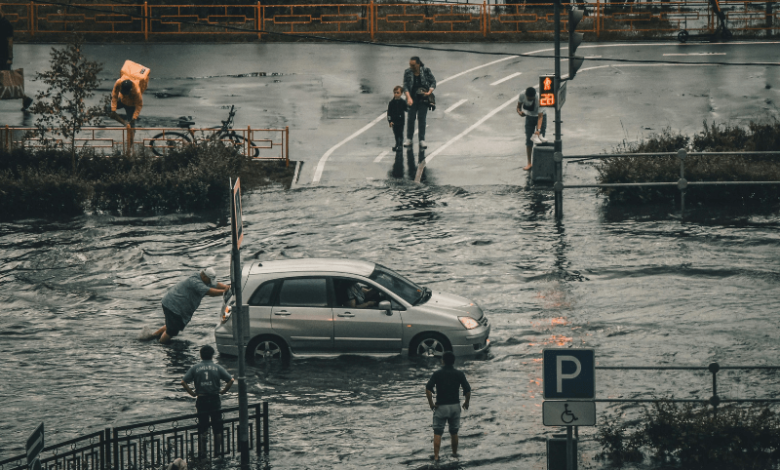The World’s Deadliest Natural Disasters: A Century of Tragedy and Resilience

Natural disasters have tormented humanity before the memory serves, with earthquakes, floods, tsunamis and hurricanes claiming around 60,000 lives annually. The United Nations Office for Disaster Risk Reduction (UNDRR) reports that 150 million people are massively affected by these events each year, demanding billions of dollars in international aid. The Emergency Events Database has recorded 7,348 natural disasters globally, over the past two decades.
Torrential rain and spring snowmelt caused biblical floods along the Yangtze River in China in August 1931, making it the deadliest natural disaster in recorded history. Eastern and central region , which includes Nanjing and Wuhan, were battered. The floodwaters covered 180,000 square kilometers, leading to widespread food deprivation and outbreaks of malaria, measles and cholera. Reports suggest up to 4 million people have been eradicated.
A 7.8 magnitude earthquake struck Tangshan, China on July 28, 1976, which caused almost complete destruction of the industrial city and claimed the lives of 242,769 people. An aftershock of 7.1 magnitude later that day magnified the catastrophe. Infrastructure, including roads, railways and dams, was critically damaged.
On November 12-13, 1970, the Bhola Cyclone struck Bangladesh (then East Pakistan), with wind speeds reaching 205 km/h. It remains the deadliest tropical cyclone, killing an estimated 300,000 to 500,000 people. The region’s fragility was intensified by the presence of seasonal workers during the rice harvest.
On January 12, 2010, a 7.0 magnitude earthquake devastated Haiti. With an epicenter near Port-au-Prince, it caused severe distraction, killing between 100,000 and 316,000 people. Poor construction standards and dense population contributed to high death count.
Indian Ocean Earthquake and Tsunami (2004)
On December 26, 2004, a 9.1 magnitude earthquake off Sumatra, triggered a tsunami that hit 12 countries including India, Indonesia, Thailand, Sri Lanka and Maldives. Waves up to 30 meters high traveled at 800 km/h, killing approximately 230,000 people. The disaster altered Earth’s rotation and caused widespread annihilation.
Typhoon Nina-Banqiao Flood (1975)
Typhoon Nina caused the Banqiao Dam in China to fail, in August 1975, resulting in one of the most calamitous floods in history. Over 100,000 people died and infrastructure was severely damaged.
A 7.9 magnitude earthquake struck Japan, on September 1, 1923, desolating Yokohama and Tokyo. It caused tsunamis and fires, killing around 140,000 people. The disaster reshaped urban planning and disaster preparedness in Japan.
On April 22-30, 1991, a powerful cyclone struck Chittagong, Bangladesh, with winds up to 210 km/h. It led to 138,866 deaths and widespread disease due to inadequate sanitation.
On May 2-3, 2008, cyclone Nargis hit Myanmar, causing 140,000 deaths and affecting 2.4 million people. The storm surge devastated the Ayeyarwady Delta, causing massive destruction and displacement.
On October 8, 2005, a 7.6 magnitude earthquake struck Kashmir, killing around 86,000 people. It caused massive damage in Pakistan’s North-West frontier province and surrounding regions of India and Afghanistan , underscoring the need for improved disaster response and infrastructure resilience.
Advancement in Disaster Management
While bereavements from natural disasters were higher in the early to mid 20th century, improvements in living standards, resilient infrastructure and effective response tools have notably reduced death tolls in recent decades. However, the rising frequency of extreme weather events due to massive climate change obligates ongoing efforts to mitigate risks, eliminate poverty and enhance global disaster anticipation.
As global temperature increases, so do the risks of apocalyptic events, making it indispensable to enhance disaster vigilance and resilience. Investing in early warning systems, sustainable urban planning and robust infrastructure is crucial. Also, addressing inequality and poverty can further decrease fragilities, ensuring that communities worldwide are better equipped to withstand the forces of nature.
By taking lessons from past tragedies and committing to proactive measures, humanity can strive to minimize the impact of natural disasters and safeguard future generations.



